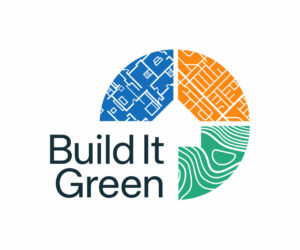In April 2015, Governor Jerry Brown directed the State Water Resources Control Board to implement mandatory water reductions in cities and towns across California to reduce water usage by 25 percent from 2013 levels. For local governments, this mandate has increased the viability of creating ordinances or reach codes that can offset potable water use.
Below, Build It Green (BIG) outlines a few of these code opportunities, such as adopting or modifying various voluntary measures from the 2016 CALGreen code.
BIG is supporting the Pacific Gas & Electric Company (PG&E) Codes and Standards Program. We are available to support local governments in PG&E territory, and we want to hear more about your needs and interests.
To find out how we can help your city or county advance your climate goals, contact Amy Dryden, Senior Technical Manager at Build It Green.
Code Update Opportunity: Indoor Water Use
Non-Residential and Multifamily or Single Family New Construction: Require compliance with voluntary measures of CALGreen. There are two options:
Code Update Opportunity: Outdoor Water Use
Non-Residential and Multifamily or Single Family New Construction: Provide alternative water supply: Plumb outdoor water use for non-potable water supply (rainwater, graywater or recycled water) for irrigation. For non-residential CALGreen Section A5.304.4.3 for non-residential and Section A4.304.4 or A4.304.5 for residential reference outdoor water use to offset or eliminate potable water use. The threshold can be defined as a reduction in potable water use for any building type.
For multifamily or non-residential, it may be appropriate to define a minimum supply volume requirement, especially in the case of rainwater as supply.
A cost-effectiveness study is not required for indoor or outdoor water use measures. However, a justification is required to be filed with the Building Standards Commission. Additional evaluations can be provided to support feasibility of implementation.
Code Update Opportunity: Commercial Kitchens
New Construction and Retrofit: Adopt voluntary measures of 2016 CALGreen, which address cubed ice makers, food steamers, food waste disposers, dishwashers and commercial pre-rinse spray valves. Commercial kitchen water use is primarily associated with dishwashing.
A cost-effectiveness study is not required. However, a justification must be filed with the Building Standards Commission. Additional evaluations can be provided to support feasibility of implementation.


Alex Coba
Communication Associate
As a proud California native from Stockton, Alex brings a wealth of experience and a versatile skill set. He has a solid communication background with a Bachelor of Arts in Journalism and Public Relations from California State University, Chico. Alex is adept at strategic communications and media relations, with experience gathering and sharing stories from his local communities that uplift the unique spirit and values of those places. He is excited to join Build It Green, where he can apply his talents to further BIG’s mission to help communities across California thrive